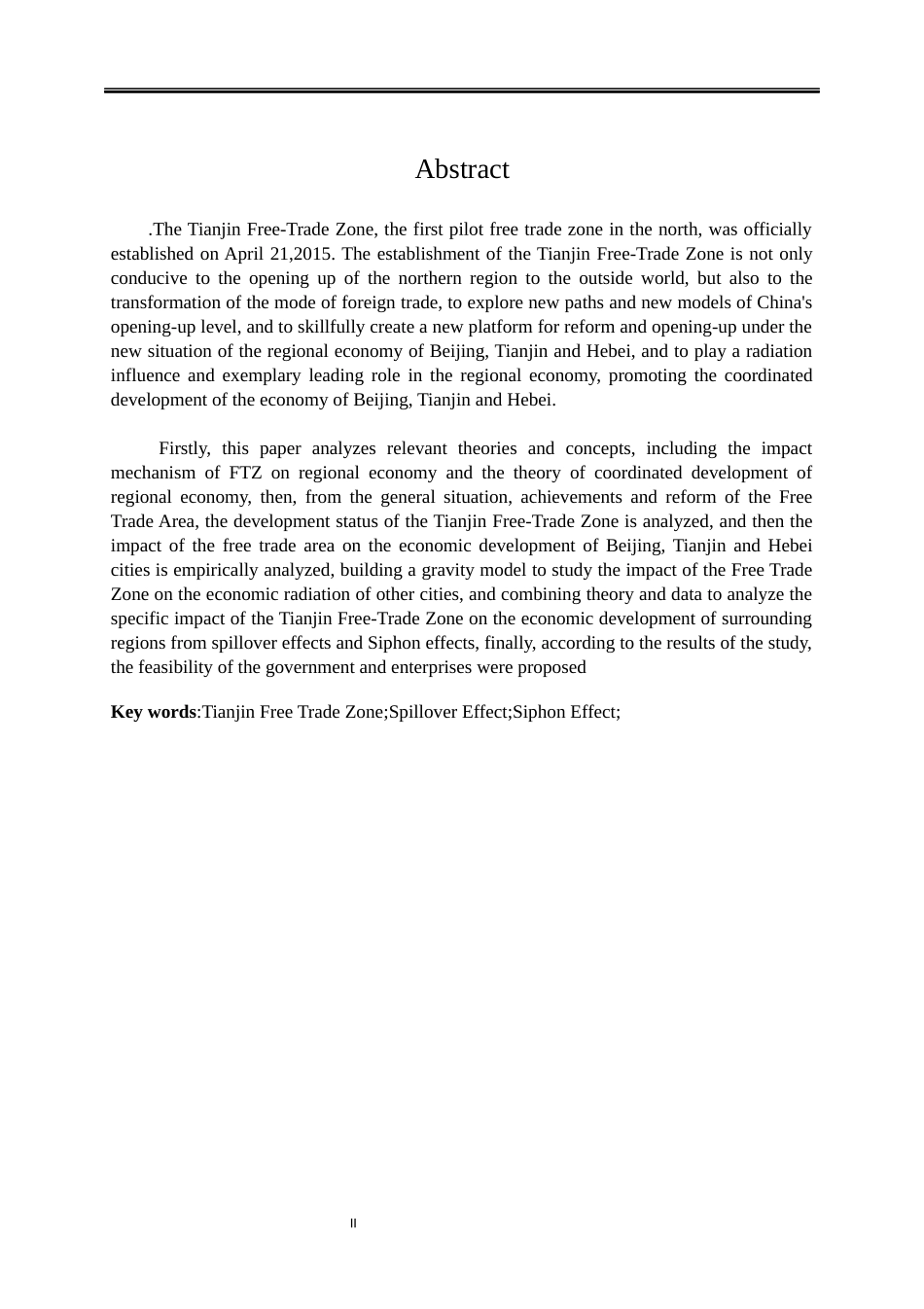I摘要天津自贸区作为北方的第一个自由贸易试验区于 2015 年 4 月 21 日正式成立,天津自贸区的成立,不仅有利于北方地区扩大对外开放,转变对外贸易方式,探索我国开放水平的新路径、新模式,而且能够巧造京津冀区域经济新形势下的改革开放新平台,在区域经济中起到辐射影响与示范带动作用,推进京津冀经济的协调发展。本文首先对相关理论和概念进行分析,包括自贸区对区域经济的影响机制和区域经济协调发展理论,然后从自贸区的概况、成果、改革分析表现天津自贸区的发展现状,再进行自贸区对京津冀各城市经济发展影响的实证分析,构建引力模型研究自贸区对其他城市的经济辐射影响力,并且结合理论和数据从溢出效应和虹吸效应分析天津自贸区对周边区域经济发展的具体影响,最后根据研究结果分别有针对性的对政府及企业提出可行性意见。关键词:天津自贸区;溢出效应;虹吸效应;IIAbstract.The Tianjin Free-Trade Zone, the first pilot free trade zone in the north, was officially established on April 21,2015. The establishment of the Tianjin Free-Trade Zone is not only conducive to the opening up of the northern region to the outside world, but also to the transformation of the mode of foreign trade, to explore new paths and new models of China's opening-up level, and to skillfully create a new platform for reform and opening-up under the new situation of the regional economy of Beijing, Tianjin and Hebei, and to play a radiation influence and exemplary leading role in the regional economy, promoting the coordinated development of the economy of Beijing, Tianjin and Hebei. Firstly, this paper analyzes relevant theories and concepts, including the impact mechanism of FTZ on regional economy and the theory of coordinated development of regional economy, then, from the general situation, achievements and reform of the Free Trade Area, the development status of the Tianjin Free-Trade Zone is analyzed, and then the impact of the free trade area on the econom...


